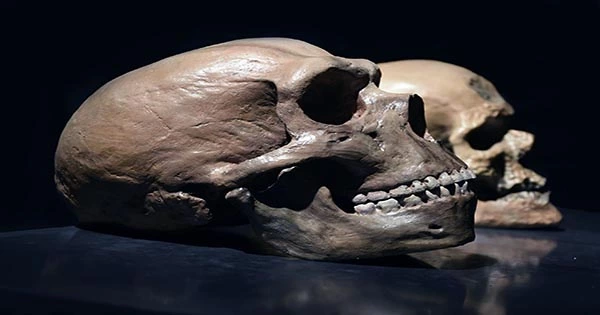Modern mankind is partially descended from what was formerly believed to be a different branch of the human family tree, according to the sequencing of Neanderthal DNA. But pinpointing the locations and times of these interactions has been more difficult. It is challenging to interpret the available evidence, in fact. Some researchers have given more credence to the hypothesis that most matings took place in a condensed amount of time and/or space by examining the facial traits of ancient skulls.
Anthropologists predicted that the greatest present concentration of Neanderthal genes would be in Europe because Homo sapiens and Neanderthals appear to have overlapped there for a longer period of time than anyplace else. Instead, those who are mostly Asian in origin likely to have a higher Neanderthal genetic makeup.
If the two populations mostly interbred in the region between the Mediterranean and the Tigris/Euphrates rivers at least 65,000 years ago, it would be the simplest explanation for present trends. But since we don’t know why the theory still seems dubious. It has received some support from a Biology article that compared the characteristics of skulls from various times and places to determine which have the most Neanderthal likeness.
In a statement, Professor Steven Churchill of Duke University said, “We frequently conceive of evolution as branches on a tree, and academics have spent a lot of time attempting to trace back the path that led to us, Homo sapiens.” But we’re starting to see that it’s more like a network of streams that converge and diverge at various locations than a tree.
Between 315,000 and 800,000 years ago, Neanderthals diverged from the main Homo Sapiens channel, yet there were times when the two rivers came together enough for DNA to mix.
We would probably have a pretty clear understanding of these convergences if we were able to extract DNA from every fossil specimen. The majority of ancient genomes, especially those found in hot regions, are much too damaged for this.
We can track population movements and interactions across time by analyzing facial morphology, according to co-author Professor Ann Ross of North Carolina State University. And the data demonstrates that, both geographically and in terms of human evolution, the Near East was a significant crossroads.
The scientists examined where Neanderthal characteristics, such as high brow ridges, appeared most prominently using published data on six quantitative parameters of cranial morphology for 13 Neandertals, 233 prehistoric Homo Sapiens, and 83 modern humans.
Common traits don’t always point to shared ancestry because regional factors can sometimes come into play. Commonalities may not signify shared ancestry because different species may have the same evolutionary response to extreme cold, for instance.
However, after accounting for such factors, the scientists discovered that some face characteristics “retained indications of inbreeding with Neanderthals” generations later.
People with traits that situate them between Neanderthals and modern humans lived in the Near East and northeast Africa during both the middle and late Palaeolithic periods, which suggests a significant amount of dual inheritance. Any subsequent hybridization that occurred in Europe seems to have had a considerably smaller impact.
Churchill explained, “This was an exploratory investigation. We have a rather limited sample size, and we didn’t have as much information on facial structures as we would have liked. Honestly, I wasn’t convinced this strategy would actually work. But in the end, the findings are really persuasive.
It will be difficult to increase the sample size from the times when Neanderthals were still alive or had just just vanished. Churchill and Ross point out that there are numerous middle-aged human skulls that can be used to trace the spread of Neanderthal DNA before increasing travel messed everything up. They are particularly interested in the characteristics of the Natufians, who may have been exceptionally close Neanderthal ancestors and lived at the eastern margin of the Mediterranean 11,000 years ago.
Although we lack sufficient knowledge on Denisovan facial characteristics to repeat the experiment for them, a project of a similar nature might assist resolve the debate over our related to Homo naledi.
















